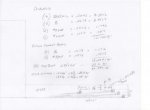WOW! Those dimensions are HUGE.The actual solution complies with NEC if we intend to use only one circuit breaker of 1200 A.
It will be 16 cables of 350 mcm all along the trough,
there will be 16 uni taps and 128 connectors [8 per unitap] of 350 MCM and other of 3/0.
If we use [for now] 2 breakers of 400 A respective 200 A and for the future extension we will keep only 2 places for two 600 A breakers no need for any connectors and all the cable could be 3/0-as Smart$ said. The trough has to accommodate 8*4 [or 10*4] 3/0 cables only. In any case minimum 30?*10? in actual solution and 20?*6? in the last solution will be the trough dimensions.
The method I proposed would be 13 #3/0 for current panels. Allow for an additional future 16. Total now and future 29 #3/0.
I'd figure CSA for that but at work and don't have ready access to wire data. Someone care to do the math for me...???

